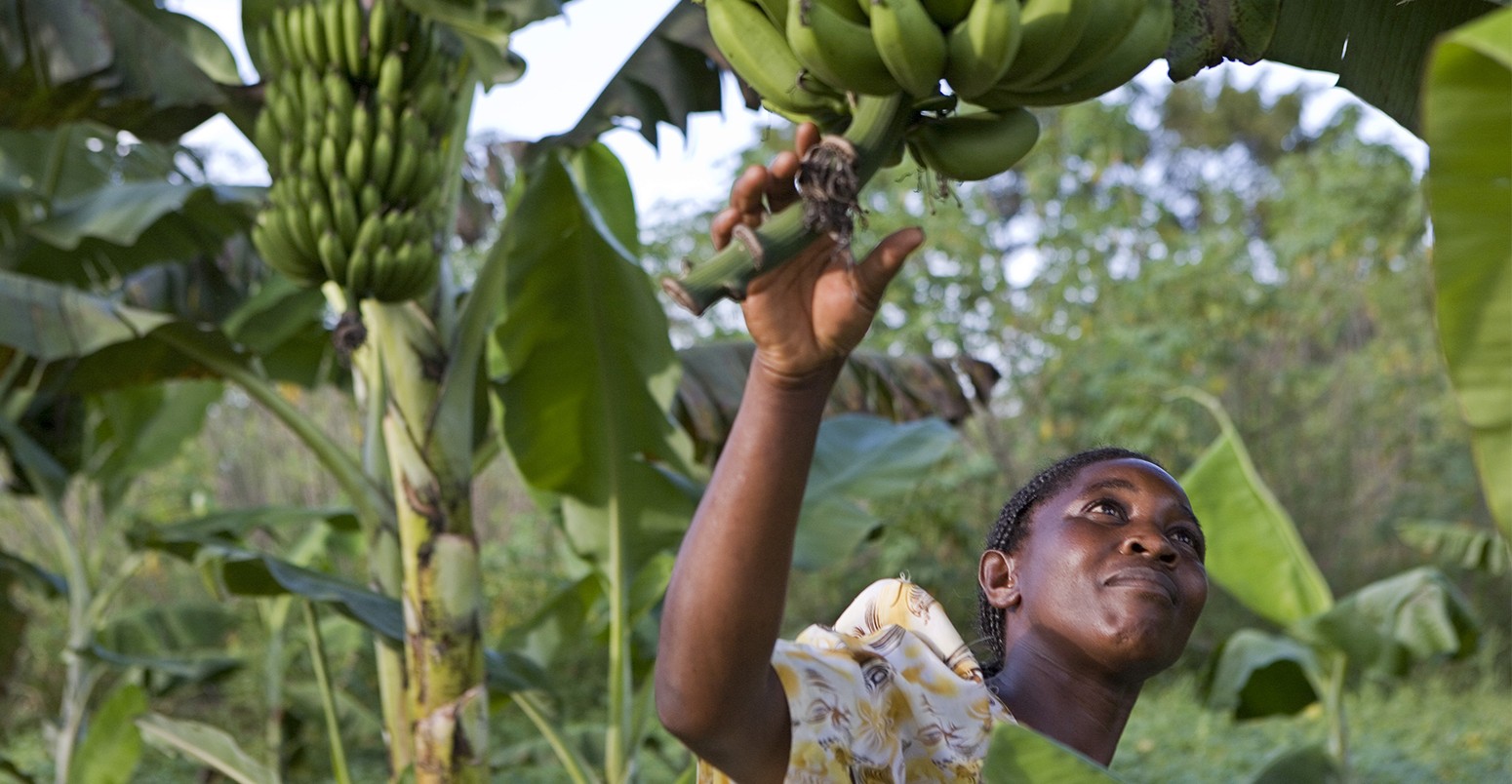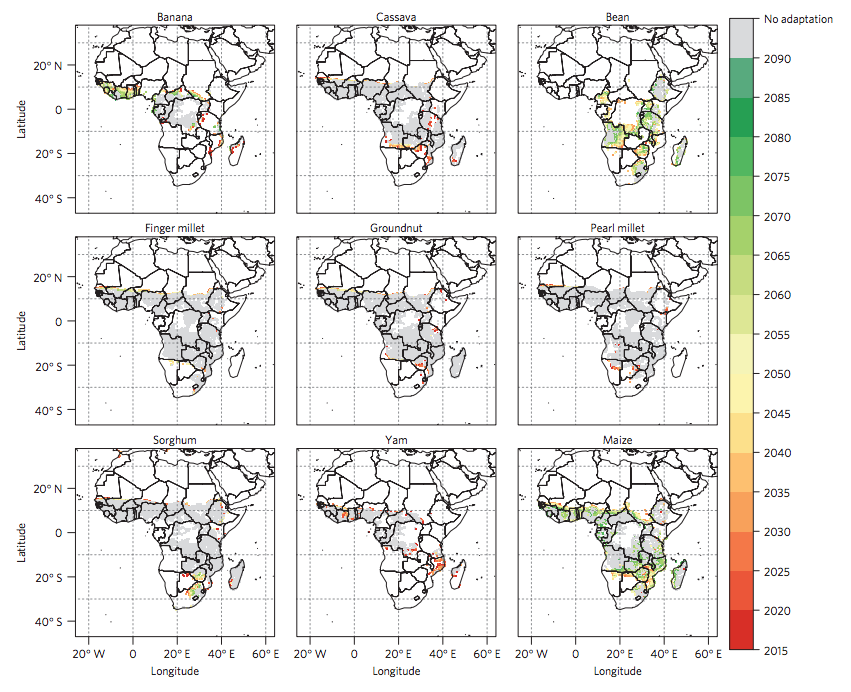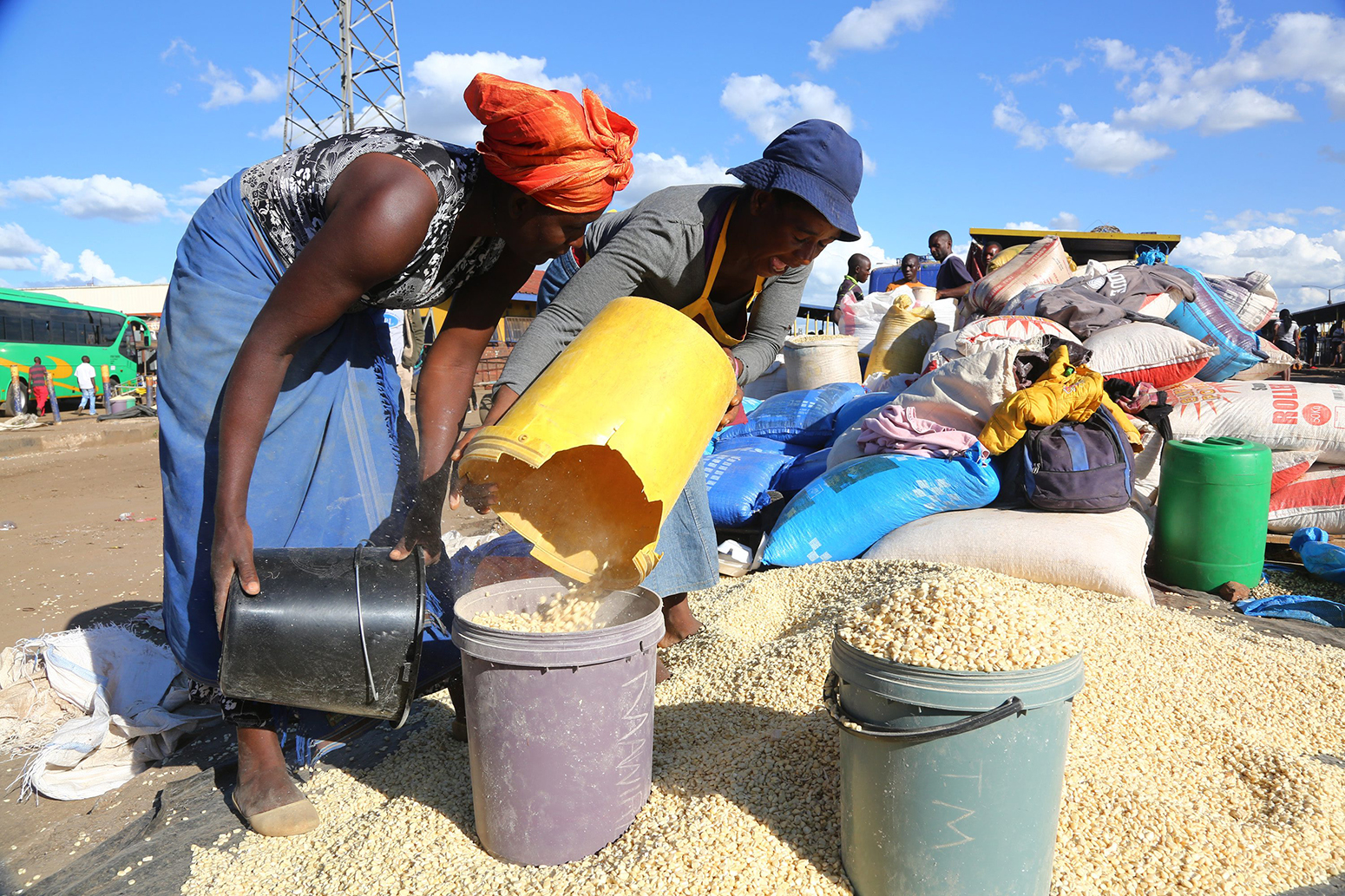
Climate change threatens staple crops in Africa, study says
Robert McSweeney
03.07.16Robert McSweeney
07.03.2016 | 4:00pmWithout emissions cuts, much of sub-Saharan Africa will become unsuitable for growing key crops during this century, a new study suggests.
Up to 60% of areas that currently grow beans, and up to 30% of areas that grow maize and bananas could no longer be suitable in a warmer climate. Fundamental changes to farming may be needed in the coming decades to maintain food security, the researchers say.
Staple crops
Last week, Carbon Brief reported on how climate change could slow progress towards curbing malnutrition across the world. That research warned rising temperatures could affect availability of fruit, vegetables and staple crops.
In today’s study, just published in Nature Climate Change, another group of scientists looks at how climate change could make areas of sub-Saharan Africa unsuitable for growing similarly important crops.
The researchers picked nine major crops that make up around half of all the food grown in Africa. Using crop models, they simulated whether those fruits, vegetables and cereals could still be grown as the climate is predicted to change during this century.
Their results suggest that if carbon emissions aren’t cut, large swaths of Africa will be unviable for growing such key crops as maize, beans and bananas.
Unsuitable climate
The maps below show estimates of when and where the climate is expected to become unsuitable for growing each of the nine crops.
An area is deemed unsuitable once its climate has changed so much that the crop fails to grow in 10 out of 20 years. It’s essentially the point at which adaptation would be required in order for farmers to keep producing that particular food.
Areas shaded red need to adapt in the next two decades, while those in green have until the latter part of the century. Grey shading indicates areas that are expected to remain suitable through the century.
The simulations assume a business-as-usual scenario, where global greenhouse gas emissions are not curbed.

Maps showing when the climate becomes unsuitable for growing nine key crops in more than 10 out of 20 years, under a high emissions scenario (RCP8.5). The shading indicates when adaptation is required – from the the next two decades (red) to the latter part of the 21st century (green), or not at all in the 21st century (grey). Source: Rippke et al. (2016).
The results show that around 60% of areas currently used to grow beans will see their climate become unsuitable this century (see map in top-right corner). This translates into 1.85m hectares of farmland, which currently produce more than 40% of all the beans in sub-Saharan Africa.
Co-author Dr Julian Ramirez-Villegas, a research fellow at the University of Leeds, explains to Carbon Brief why beans are at risk from climate change:
The findings also suggest that key banana growing regions in West Africa (see top-left map) and maize growing regions in Southern Africa (bottom-right map) will become unsuitable during this century.
Both are important staple foods for much of Africa. Bananas and plantain, for example, provide more than a quarter of food energy needs for around 70 million people.
Root crops, such as yams and cassava, and the drought-resistant cereals millet and sorghum are less affected by a changing climate, the study finds. Typically less than 15% of sub-Saharan Africa becomes unsuitable for those crops during this century.

Merchants sell maize which is a commodity imported from Zambia, at the Mbare Musika Bus Terminal, in Harare, Zimbabwe, 03 March 2016. The government has directed the Grain Marketing Board to slash the price of maize from 23 US dollars per 50 kg bag to 15 US dollars to enable the majority of people affected by the El Niño-induced drought, to buy the staple. © EPA/AARON UFUMELI
Adaptation
The researchers identified particular hotspots where farming is most at risk.
For example, the northern edge of the Sahel – the strip of land to the south of the Sahara desert that crosses Senegal, Mali, Burkina Faso and Niger – is expected to become unsuitable for as many as five of the nine crops by the 2050s, Ramirez-Villegas says. Similarly at risk is northern Botswana and Namibia, he says:
Overall, African governments “will need to prepare for possible large losses in national production potentials, and production areas, of up to 15% by 2050 and over 30% by 2100,” the paper says.
The study sets out three stages of adaptation for farmers and governments to help ensure food security in a changing climate. Options range from improving existing farming methods all the way up to farmers switching to different crops or other ways of making a living.
The study’s findings are “both encouraging and concerning,” writes Prof William Travis, from the University of Colorado, in an accompanying “news and views” article:
In high risk areas in particular, writes Travis, “the potential for loss and dislocation…looms large and worrisome for agricultural policymakers as well as for farmers.”
Main image: Mrs Beatrice Sebyala examines her plantain (motoke) crop at her farm, 15 Oct 2007, Nakasongola, Uganda.
Rippke, U. et al. (2016) Timescales of transformational climate change adaptation in Sub-Saharan African agriculture, Nature Climate Change, doi:10.1038/nclimate2947 & Travis, W. R. (2016) Mapping future crop geographies, Nature Climate Change.
-
Climate change threatens staple crops in Africa, study says
-
Without emissions cuts, much of sub-Saharan Africa will become unsuitable for growing key crops during this century, a new study suggests

